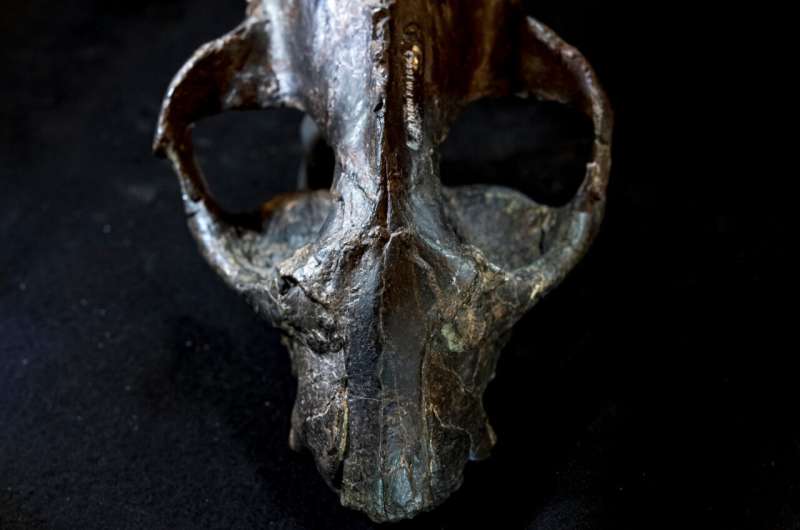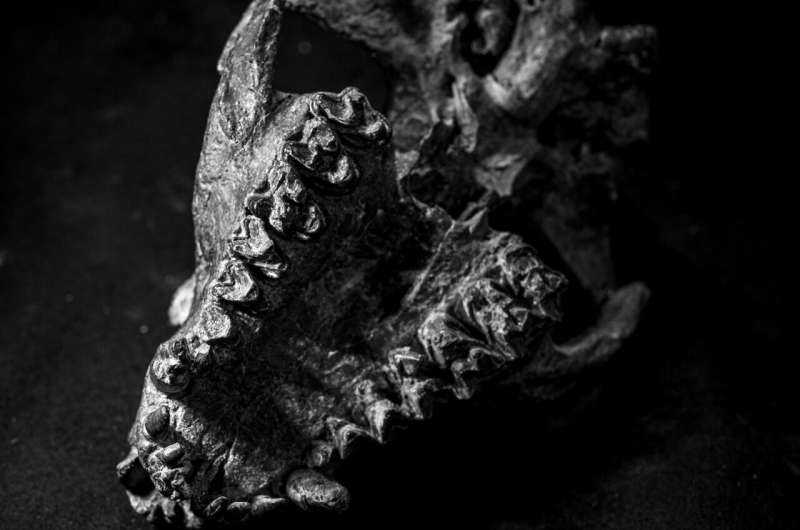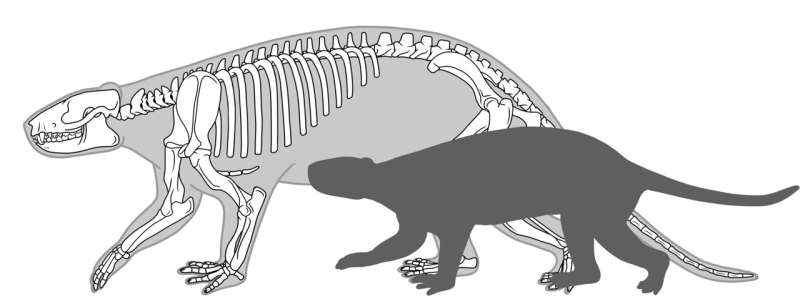Pantolambda skull. Credit: G Funston
A team of researchers from the U.K., Canada and the U.S., has found evidence suggesting that after the dinosaurs went extinct, the mammals that remained began to grow larger and did so faster—and they died young, too. In their paper published in the journal Nature, the group describes their study of Pantolambda—a member of a clade (pantodonts) that included a range of mammals that began to thrive after the demise of the dinosaurs.
Approximately 66 million years ago, terrestrial dinosaurs went extinct after a large asteroid strike in what is now the Gulf of Mexico. In the void left behind, other creatures such as mammals began to thrive.
Prior research has suggested that mammals first appeared approximately 210 million years ago. But because of the dinosaurs, they did not really thrive. They remained small—about as big as a modern housecat—and many only came out at night. After the Chicxulub impact event, it took some time for the creatures that survived to regain their footing. But once they did, mammals soon began to rise to a more prominent role. One such animal, the Pantolambda, did particularly well. Just 4 million years after the disappearance of the dinosaur, it had grown in size to that of a modern sheep. In this new effort, the researchers took a closer look at several Pantolambda specimens to learn more about the creature and perhaps how it was that mammals came to become so dominant.
Images: G Funston
The researchers studied the fossilized teeth of the specimens. Each was cut into very thin slices and then studied to learn more about its makeup. Such study can reveal information about the history of its original owner, such as how long it was in the womb, what it ate over the course of its life and how long it lived.
The researchers found that Pantolambda gestated for approximately seven months—long enough for the fetus to develop into a baby that could survive almost on its own right after birth (it already had teeth). The researchers found they only nursed for a month or two. They also found that the creatures quickly grew to full size and did not live long—just 10 years.
-
Pantolambda teeth. Credit: G Funston
-
Pantolambda reconstruction - juvenile and adult. Credit: S Shelley
The researchers suggest such characteristics gave the creatures the best shot at survival, allowing them to survive childhood and then to reproduce as quickly as possible—clues that might help explain how mammals became so dominant in the following years.
More information: Gregory F. Funston et al, The origin of placental mammal life histories, Nature (2022). DOI: 10.1038/s41586-022-05150-w
Journal information: Nature
© 2022 Science X Network


























